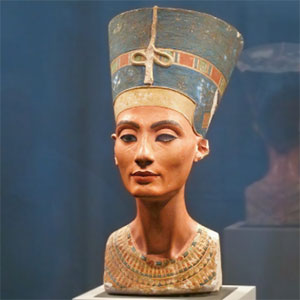
Pharaohs, schmaraohs. Schoolkids have been studying the kings of ancient Egypt for eons. A fascinating and worthwhile subject, to be sure! But I’d venture to say most of us aren’t as educated on the various queens of Egypt—beyond iconic boss lady Cleopatra.
Which was no doubt part of the reason why my stroll yesterday through the recently opened “Queens of Egypt” tour at the National Geographic Museum was so interesting. It was a visually stunning exhibit—there’s a trippy 3-D virtual tour of one of the most beautiful and well-preserved tombs in the Valley of the Queens! But I was also learning so much as I perused the exhibits of more than 300 artifacts with descriptions. (Did you know Queen Nefertari wore a size 9 shoe? Neither did I.)
Of course, there was also a jewelry component to the show. Ancient Egyptians took their adornments seriously—chiefly as protective talismans and displays of social status. And the seven ancient queens profiled in the exhibit (including Nefertiti, Nefertari, Hatshepsut, and Cleopatra) ruled Egypt in incredible jewels.
Yellow gold reigned in ancient Egypt, because mines between the Nile and the Red Sea yielded the largest quantities of the precious metals. Silver was exotic and rare—it had to be imported from outside the Mediterranean—and therefore far more prized.
Ancient Egypt’s goldsmiths pioneered several techniques still in use today, including granulation, filigree, and cloisonné work. And they loved gems—from the locally available (amethyst, carnelian) to the imported (lapis lazuli, turquoise).
But those who couldn’t afford precious jewels could wear beautiful bling made from humble materials including glass, shells, and earthenware pottery.
Here a few (illustrative, I hope) photos of jewels from the exhibition, which runs through Sept. 15 at the National Geographic Museum in Washington, D.C.
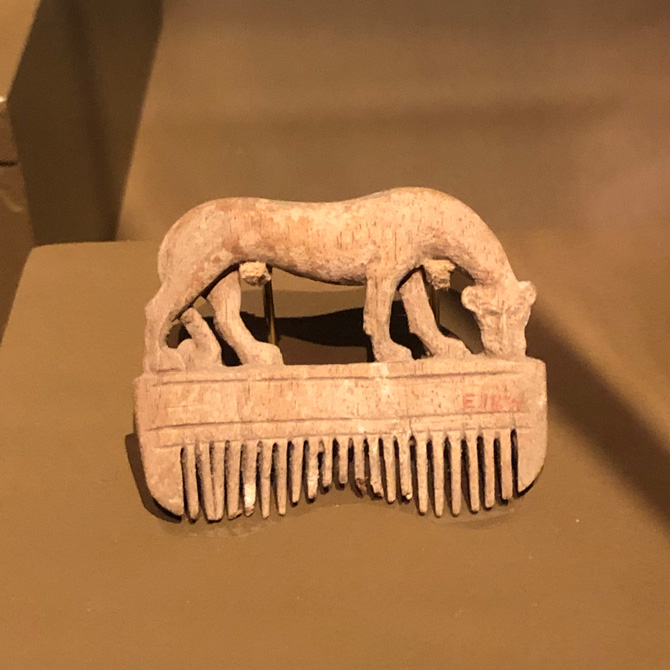
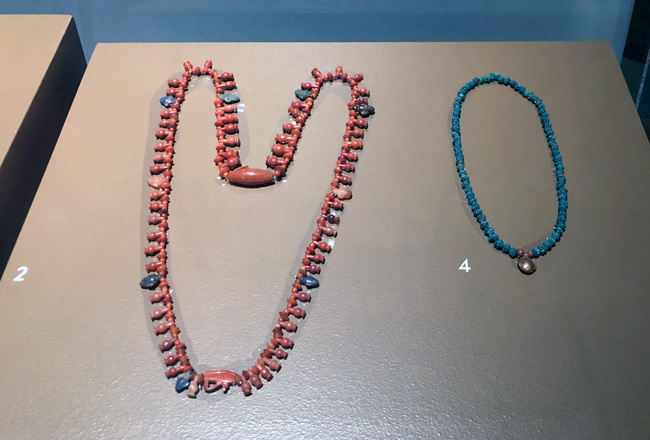
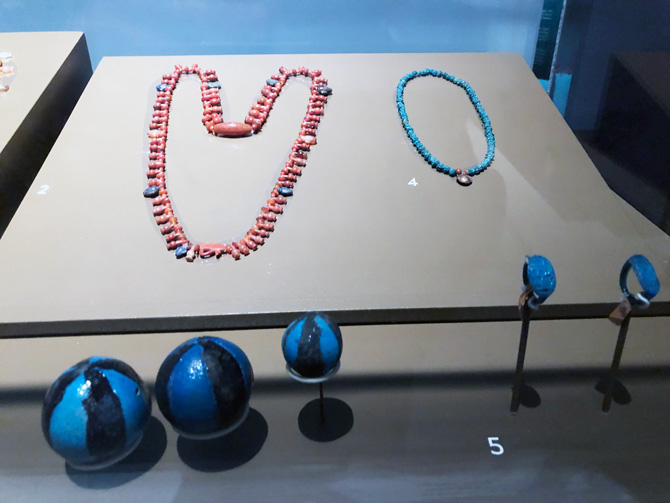
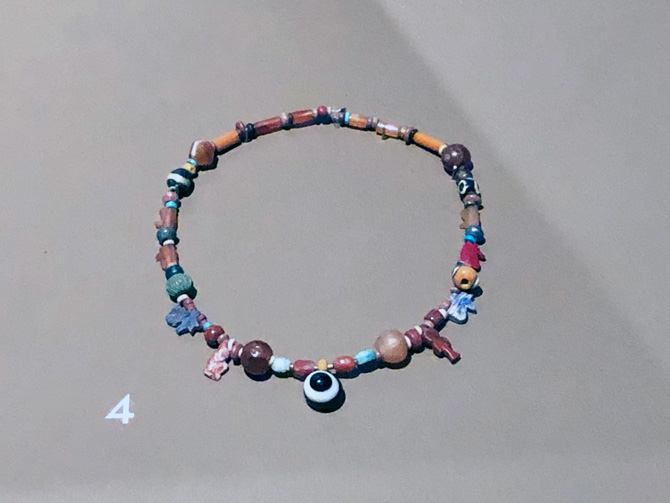
Top: A bust from ancient Egypt with an eye intentionally missing (photo courtesy of National Geographic)
Follow me on Instagram: @emilivesilind
Follow JCK on Instagram: @jckmagazine
Follow JCK on Twitter: @jckmagazine
Follow JCK on Facebook: @jckmagazine